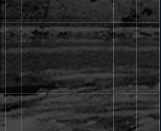Lessons
from Bosnia-Herzegovina had been learned by both sides. The Holbrooke-Milosevic
agreement of October 1998 gave NATO satellite and spy planes the right
to monitor the situation on the ground, leading to an increased level
of caution on the part of the perpetrators. One significant departure
from Bosnia-Herzegovina was the widespread use of wells for the disposal
of bodies which, along with the use of grenades to collapse the walls
and landmines to hamper excavation, led to increased difficulties
for investigators. Given the chaotic situation on the ground, the
finite resources of the ICTY, and the rapid onset of winter which
curtailed the exhumation process, ICG personnel were well placed to
support the tribunal with the task of witness documentation.
Articles 2,3,4, and 5 of the statute of the ICTY detail the crimes
that the tribunal is charged with investigating in former Yugoslavia.
Article 3 lists the violations of the laws or customs of war which
include the "attack, bombardment, by whatever means, of undefended
towns, villages, dwellings, or buildings;" and the "plunder
of public or private property". Article 5 deals with Crimes against
humanity, which include "murder; extermination; deportation;
torture and rape." It is under these two articles that Slobodan
Milosevic and leading members of the Yugoslav cabinet have been indicted.
The task facing ICTY investigators following the withdrawal of Yugoslav
army, police, and paramilitary units from Kosovo in June 1999 was
on an unprecedented scale. Unlike Bosnia-Herzegovina, freedom of movement
in post-conflict Kosovo was less complicated and entailed fewer security
risks than in the immediate aftermath of the Dayton Agreement. In
addition, the ceasefire in Bosnia was declared in winter, which limited
the exhumation process, while the ceasefire in Kosovo came at the
height of summer.
The pattern of killings and burial in Kosovo also differed from that
of Bosnia -Herzegovina and hindered investigations in that the crime
scenes and body disposal points were often scattered over a radius
of several kilometers. Mass graves in western Kosovo tended to hold
fewer bodies than their counterparts in Bosnia, reflecting the lower
volume of killing, but also the more scattered distribution of remains.
Some bodies were burnt individually, some in groups, while others
were transported in refrigerated trucks to industrial crematoria at
meat-processing plants.
The difficulties of documenting war crimes in a post-conflict environment
should not be under-estimated. The wellbeing of the witness is of
course paramount, and that of the local staff a close second. Daily
field work often entailed attending mass grave exhumations and reburials,
marking newly discovered bodies with Global Positioning Satellites
(GPS), and recording crime scenes with digital cameras. With a fleet
of 15 jeeps, the ICG focused on the municipalities of Decan/Decani,
Gjakova/Djakovica, Rahovec/Orahovac, Malisheve/Malisevo, Istog/Istok,
Suhareke/Suva Reka and Prizren/Prizren. The international legal staff
were comprised of lawyers, some of whom had worked for the ICTY in
the Hague; while local legal staff were drawn predominately from the
various sub-committees of the Council for the Defence of Human Rights
and Freedoms (CDHRF), the leading Kosovar human rights NGO. Data base
entry was supervised by international IT support staff and a logistics
unit.
|

